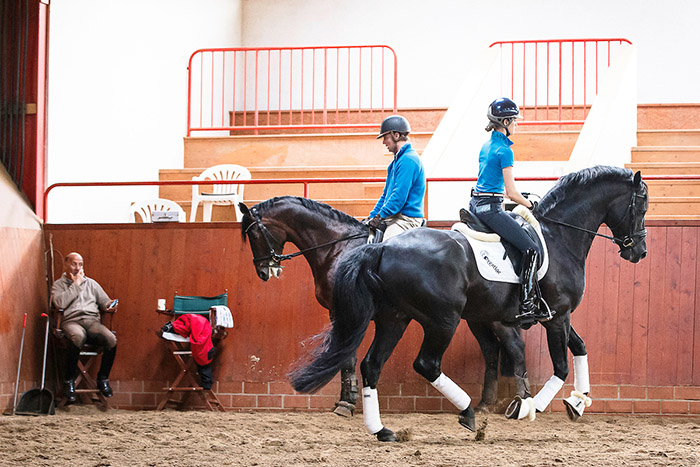
Brett Davey and his New Zealand partner Andrea Bank have only recently returned from three years at Jonny Hilberath’s busy dressage stable in Germany where suddenly they were in a whole new world of dressage…
Rebecca Ashton tells the story Photos: Libby Law and Rebecca Ashton
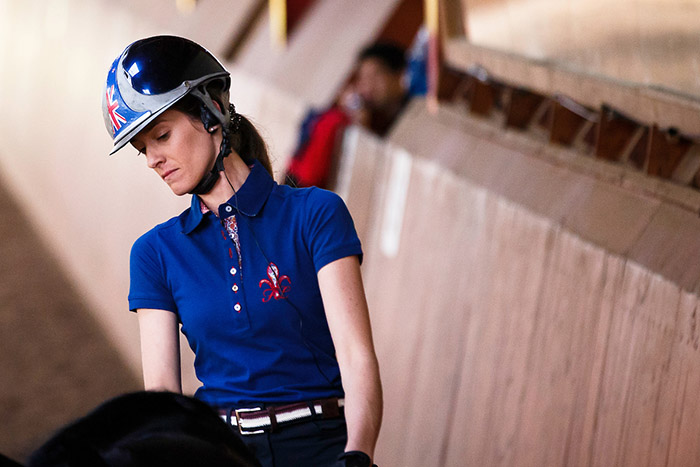
Andrea took her licensed Hanoverian stallion Doringcourt to Jonny’s barn and the training they received was nothing less than transformative. Andrea explains, “I didn’t get to compete Roy (Doringcourt) in Germany because of an injury later in our stay, but before that I delayed competing because Jonny totally changed my way of training. He taught me how to ride from my seat. I’d never been taught that your seat was such a massive aid. It’s so sad, isn’t it?! The Germans learn that from when they’re little kids. I’d never been taught that but he taught me; he changed everything. I wanted to do Grand Prix but I wasn’t in enough harmony with Roy.”
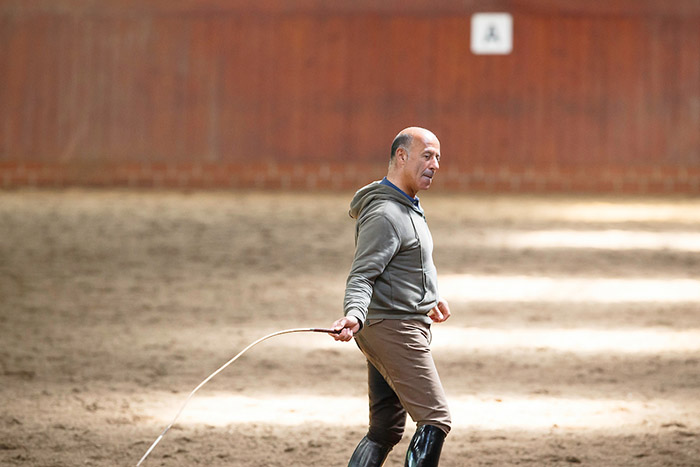
“When I first rode in front of Jonny he said, ‘Andrea, there’s no language between you and your horse.’ I said, ‘I know!’ but then that’s why I was there; to learn everything. Roy’s a really tricky horse because he’s super flexible. Too flexible. There’s so much detail into getting that horse through. Sometimes Jonny would sit on him and I’d ask him what he was doing, just so I could understand. I’ve learnt that you actually need some tension in the horse’s body, so it can hold itself. My little mare, she has that, but Roy was just this big, floppy, loose horse. We had to teach him how to have a bit of tension and eventually he became very athletic. He could actually buck and he couldn’t do that before! We were excited because that showed he was starting to move his body differently. He hasn’t got a nasty bone in his body but we taught him how to play.”
“Jonny started teaching him all that with in hand work. It was amazing how he went about it. I was on him and Jonny would be on the ground with a whip. He wouldn’t hit him. We were never allowed to ride with whips, no running reins in the stable, nothing like that at all. But he would have this whip and play with Roy. He would wiggle it in front of him like you do with toys in front of cats and Roy would start playing with him. That’s how he taught him to passage. We were all laughing. It was a game. Jonny taught me that you have to give your horse confidence rather than force them to get a movement. They have to play and want to do it.”
more follows
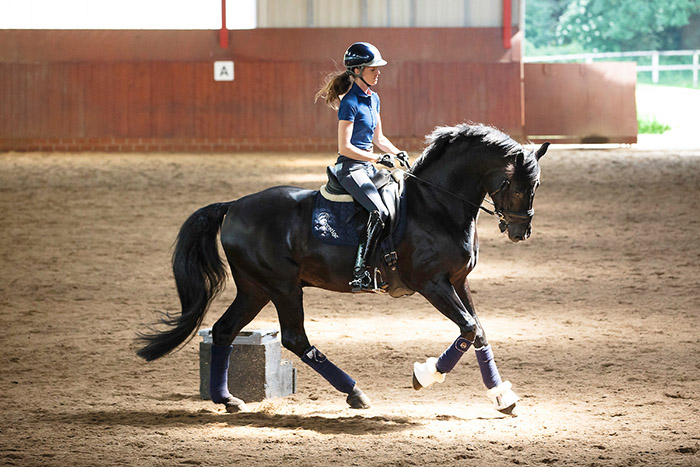
Brett agrees, “I think that’s one thing I will never forget. I used to love talking to Jonny about methods and the thinking behind it. He never trains or rides with a whip, even the high movements. You see so many people train the piaffe or passage with a whip and the horse will go, ‘Yeah, yeah, ok, I’ll do it because I have to,’ but Jonny wants it to be their party trick and that they enjoy doing it so that when they’re in a big atmosphere, they don’t think, ‘Oh no here we go, I’m going to be kicked and pulled until I do it.’ Instead they think, ‘Here’s my chance to shine and play and for everyone to look at me, I can do that.’ I think that’s such a good way to look at it.”
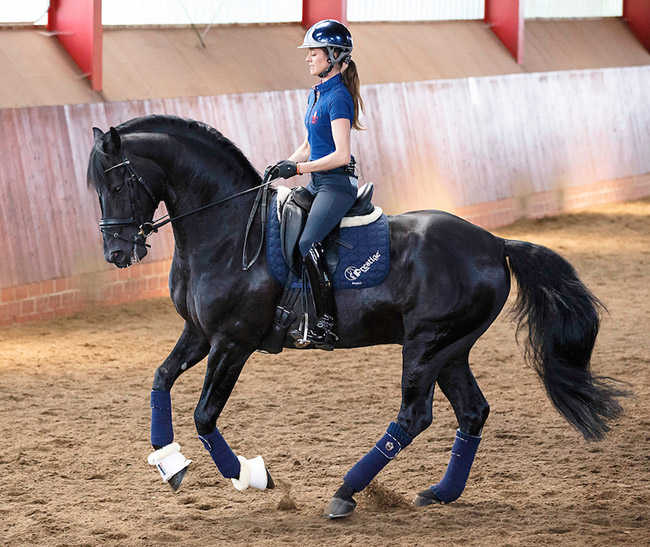
It was an eye opener for the couple to see one of the world’s best trainers preparing riders for WEG and Rio, to see what it takes and the attention to detail involved. Despite that, Hilberath has established a supportive training facility filled with riders from all over the world who dig in and help each other. The trainer also always has time for people. Andrea relays their meeting at WEG, “He was training riders like Helen Langenhanenberg in Normandy, but on the day of the kür, he’s ringing us up to come and have a drink. Then he was, ‘Ok guys, I have to go now. I have an important job to do.’ We were nobodies, but he still had time for us despite his schedule.”
more follows
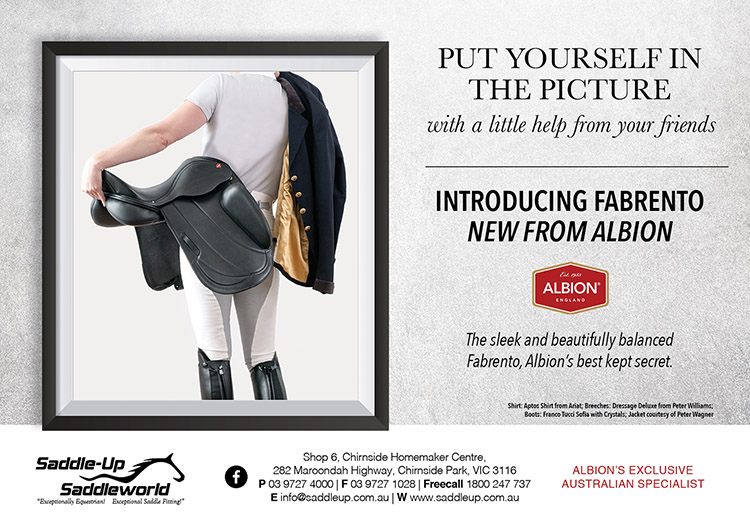
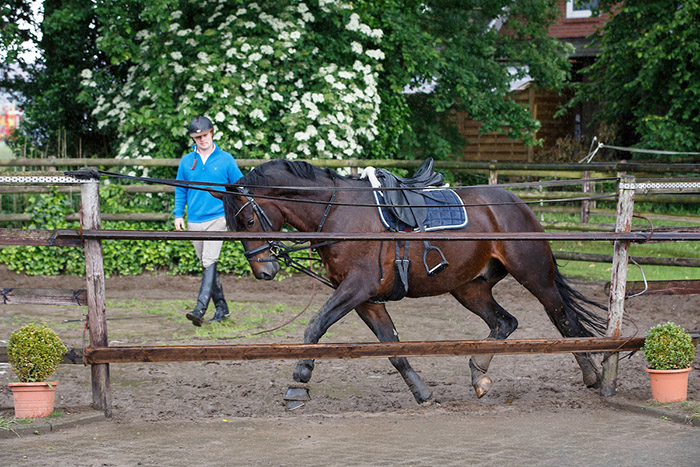
Brett’s skill as a breaker and handler of youngsters came to the fore as well while overseas. Andrea tells the story, “There was one really naughty horse that threw Jonny off like a beauty. He got up out of the sand and walked out past Brett saying, ‘Brett, that’s a horse for you.’”
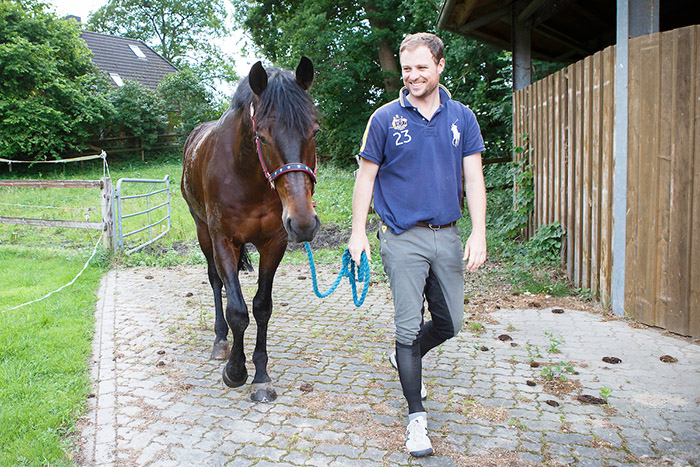
“And I don’t mind those sorts of horses,” continues Brett, “If they’re talented, I don’t mind. I enjoy getting in their heads and working through things in the right way. You can’t bash them up. If they’re naughty they have to be put in their place, but you have to become their friend. They end up becoming really trusting and confident.
“The work snowballed at one stage with the dressage horses and breakers because I was working them like I do here; lots and lots of ground work, lots of driving. I like them so that on their first ride, they should walk, trot, canter in a frame, on the bit. They really should. If you haven’t got that, you have to go back a few steps. I saw some methods in Europe that were quite dangerous. I might take a few more weeks to do it but at the end you’re months ahead. So, I would do all this ground work with the young ones, ride them once or twice and then I’d ride them out around the property and down the roads. The Germans loved it but they just thought I was the craziest Aussie ever because so many of them don’t even get their Prix St Georges horses outside, so for them to see me taking these breakers outside was absurd.”
more follows“But for us in Australia, that’s nothing. It’s what we have to do. I saw an English girl at a stable over there, the horse’s very first ride was up and down the stable aisle, on bricks with all the horses’ heads out. I told her you couldn’t pay me enough to do that. She asked where I would do it and I said in the round yard to which she replied, “Oh, the round yard’s outside.” So, I guess, we have a slightly different way and perhaps it’s because of our upbringing. The first time at a show, our horses have to tie up to a truck; they’re competing in what equates to a big, open paddock.”
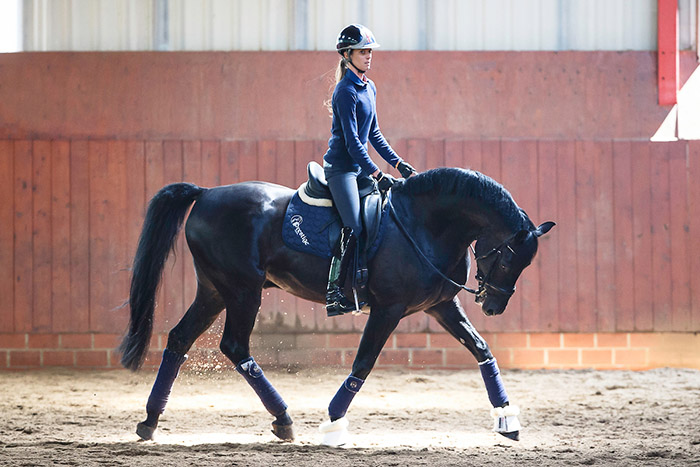
Doringcourt’s injury while overseas was one of the factors influencing Andrea’s decision to move back south when she did. “It was an emotional roller coaster, making that decision. Poor Brett and my parents! I was very back and forth about whether I should come home or not but once I made the decision, I never looked back. Roy had been injured for a while by then, so I guess it wasn’t really so hard a decision. Before I left, I had a really nice talk to Jonny and he said, ‘Andrea, it’s rubbish what has happened, but you’re lucky it’s happened to you at such a young age. You’ve got through it and it will make you a stronger person. I know you’ll be back here in Europe to ride. Roy will probably come back stronger.’ That gave me the drive to come home, get the horse stronger with hill work and swimming and all this lovely work we can do outside to really get him going again. I think I’m quite strong like that. When something bad happens, it makes me more determined.”
“When I went to Germany, I was really outside of my comfort zone and it made me grow up fast. I was getting a bit bored in New Zealand and I wanted to be thrown in the deep end and have a new, big challenge. I was craving it so I had no problem going over there and being absolutely no one. It was a steep learning curve both personally and professionally but an awesome experience. I would definitely go back to Europe again but to campaign for a big event. The horse would have to be Grand Prix and we now know what it takes to be successful. I wouldn’t go over unless I knew I could crack 70%”
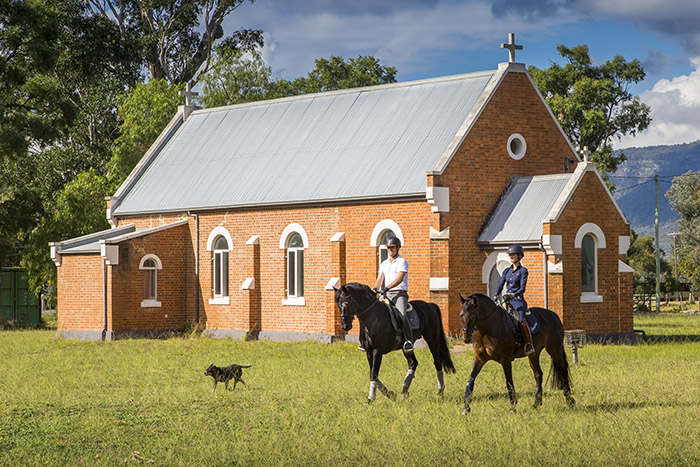
Brett, 33 and Andrea 30 never planned to stay in Europe forever. “We can’t afford to live there. I think it’s only possible if you’re very wealthy or so completely dedicated to the sport but the latter is very, very hard. I don’t want that. Life’s too short,” says Andrea.
The two met well before any sparks flew when the Kiwi was 14 and the Aussie 16. Brett continues, “I was riding for Australia and Andrea for New Zealand in the Pacific Challenge at Werribee. I just need to add that Australia won that competition!” Poor Brett kept trying for a while, but to no avail until five years ago at the Sydney CDI, Andrea saw the light and the rest, as they say, is history.
Maybe it was meant to be with the two riders having similar opportunities as teenagers. Although Brett has done a bit of everything in his riding career, his big break came when at 16, while training with Shaun France, he was offered the ride on her Grand Prix horse Barrington Ock Tedi, the ride of Rozzie Ryan at the European Dressage Championships two years earlier. Andrea was also given a wonderful opportunity at 15, riding Grand Prix on Bill Noble’s stallion Icarus Allsorts and she was long listed for the Athens Olympics.
In what initially felt like a “what have we done?” moment, setting up stumps in the NSW town of Broke, they’ve settled back into Australian life and are slowly developing their boutique dressage barn.
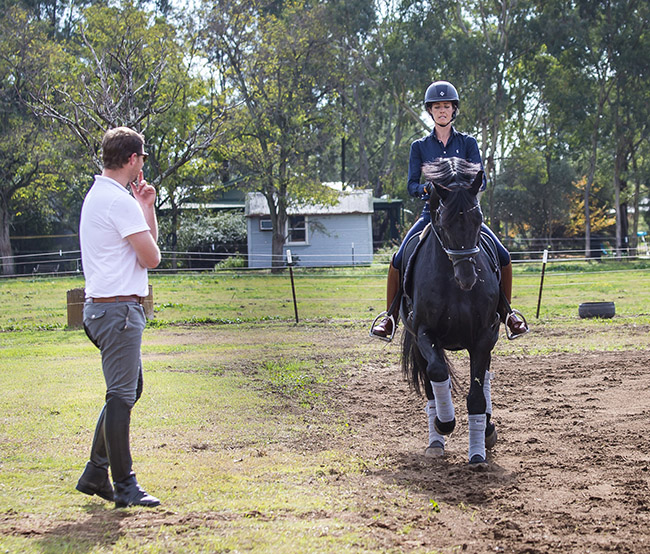
Contrary to Brett’s explanation of, “We drew it out of a hat,” the real reason Broke, in the Hunter Valley was their chosen destination upon their return to Australia has deeper roots, “My family were part of the first settlers in the area and the house was built by my great grandfather. My grandparents lived there and my Mum grew up there and it’s where I first learnt to ride. Pa had cows, fruit and veggies and grew a lot of lucerne and did that well into his 80s. I think Mum and Dad had the idea that I should live here, but I was against it. However, it really grew on us.”
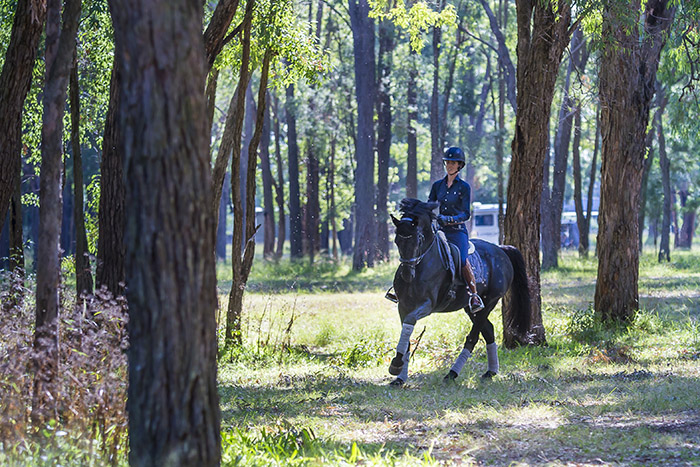
The decision to move to Australia rather than Andrea’s home country of New Zealand made the most sense to the Kiwi as well, “We had to start somewhere and we couldn’t afford our own property. Before Europe, I lived here for six months and it felt like it was in the middle of nowhere and I thought I could never live here. After being in Germany in a flat and with horses and people everywhere, you crave your own place and so now we really love and appreciate this property. Also the sport is bigger in Australia and you get to compete all year round. It makes more sense to be here.” Although Andrea misses her close knit family, she admits it’s easier than being in Germany and she goes back home to teach every four to five weeks.
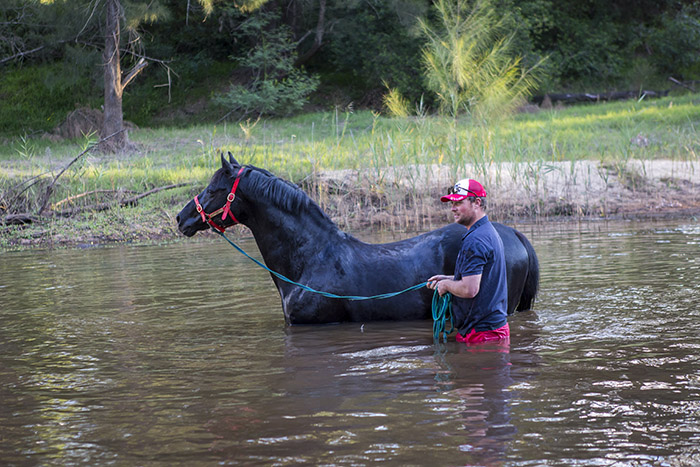
The couple have incorporated a lot of the ideas they picked up in Germany into their daily dealings, but have also kept what they love most about Australia and the way things are done here. They’ve taken their German trainer’s playful methods into an outdoor setting. The quiet surrounds of their property allow the horses to be ridden to the local park and around the country roads which supplements the dressage training. There is also a river down the back of the property where Doringcourt loves to swim.
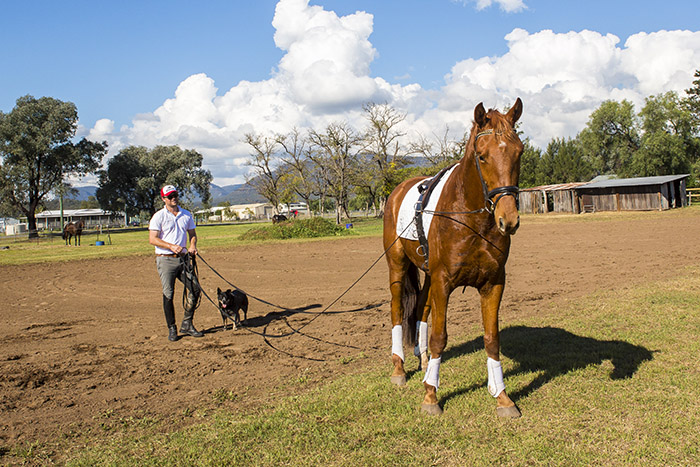
Brett uses a little chestnut he’s bred, Bluey (Charmeur / Wolkenstein II) as an example, “He’s had three rides, but his last ride was down to the park. I think it’s the best thing for them. They have to do that from day one with Bessie (Brett’s shadow of a blue heeler) trotting alongside them. You want a young horse to go more forward? What’s better than to take it down to the park where you can go more than 60 metres? You can open it up a bit, you can stand up in the stirrups and let them travel and you’ve taught them how to go forward in one or two rides and it’s not from driving them around the arena for weeks and weeks. You obviously need to be in the arena sometimes, but you need to find the balance. We’ve also been swimming Roy all summer. He would basically do three days on the road walking and trotting, swimming two days a week and a day off. We want to do that for all of the horses. You don’t have to spend five or six days in the arena to produce a dressage horse.”
Breeding is another interest the couple share. Brett enthuses, “I’m really passionate about it and it’s a great opportunity to produce some good horses. I’ve tried to get the best frozen semen that I can and match it to the mare. We’re about four or five generations frozen semen so it starts to get interesting now and I think they’re as good as anything overseas. It’s just up to us to produce them. I really enjoy looking at mares’ strengths and weaknesses and matching the best stallion for them.”
“We were also lucky to go to so many auctions and stallion licensings over in Europe. So that was really interesting from the breeding side of things, seeing all the different traits from the different mares and stallions. I think the Germans need the Dutch influence as much as the Dutch need the German influence. I don’t think you can say, ‘Oh I only use Hanoverians, or I only use KWPN’.”
They currently have youngsters by San Remo, Ampere, Fürst Romancier and Johnson. Andrea took her home-bred mare, Dakira (Doringcourt/Bellissio) over to Germany for a few months during her stay. “She’s only little but Jonny really loved her because she’s well put together. And that’s another thing that I think we learnt over there; the mentality is changing a bit away from the big moving horses. They would much rather see one that is very correct with correct training rather than a big, flashy, loose mover with no connection. That’s a change that I’ve really noticed over there and I think it will come here too.”
“It’s also how you train them and how you go about getting the movement. That’s what needs to come over here a bit more as well. The basics. People want to know all the secrets that you’ve been taught in Europe but really, it’s just basics. Basics, basics. At the good stables, that’s all it’s about: good training. I remember when I first went over, seeing Jonny on a horse doing piaffe and then patting the horse and making a real fuss over him and I thought, ‘Oh, that looks a bit average.’ The next moment, it was a bit bigger. He pats him again. And then again it’s even better. The horse was just growing in confidence and wanting to do it for him.”
Brett concludes, “All the tricks and gadgets, they are around over there, but not at the good stables. I think people sometimes get surprised with that.”
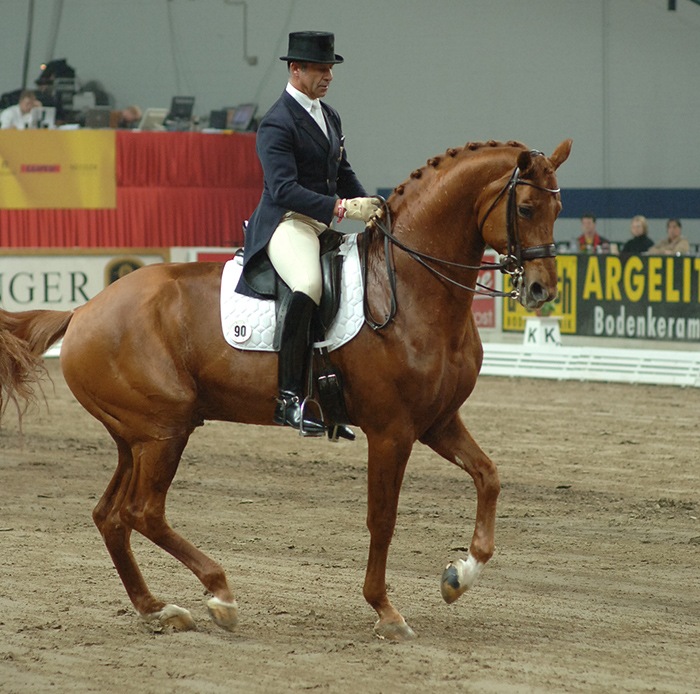
Jonny competing on the stallion, Wenckstern…
It might be a big step from the centre of dressage in Germany to Broke, but Andrea still has Jonny’s voice in her head every time she rides, “It’s always saying make sure there is a language between you and your horse! Is your horse straight? Can you put your hands forward and your horse stays on your seat? Also when I compete I will never forget what he said to me, he was referring to making a team for the Olympics or a big event, but I always think about it. He said if you go out and get 80% then you’re on a team. No excuses, don’t talk about it, just do it. So that is my inspiration. The Germans just get on with it, no excuses!”
Brett and Andrea have the drive, determination and now also the knowledge to make their new stables work. They both admit to being stubborn and competitive with each other, but the couple work very well together. “We’re both on the same page. Andrea’s a little bit OTT with the horses and I’m really laid back, so it balances itself out!” smiles Brett. They’re each other’s eyes on the ground and sounding board for ideas. Andrea sums up their approach and hopes for the future, “I love the sport but I love my horse more. We want them to be horses and I guess that’s what we’re trying to do at our new place. We’re trying to keep it small so we can really do lots of different things with them and have the time to do that.”
With family, friends, a solid breeding programme, good sponsors (Prestige, Hygain, Equi-Ice, Moore Riding Wear, Syncroflex HA and Peter Horobin) as well as Brett’s fledging German equestrian product import business, Flaneur Equine behind them, the dressage couple are well on their way to success.
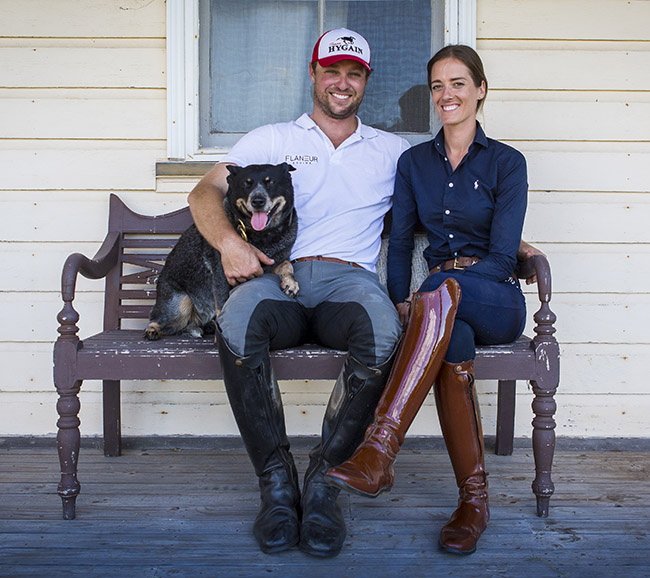

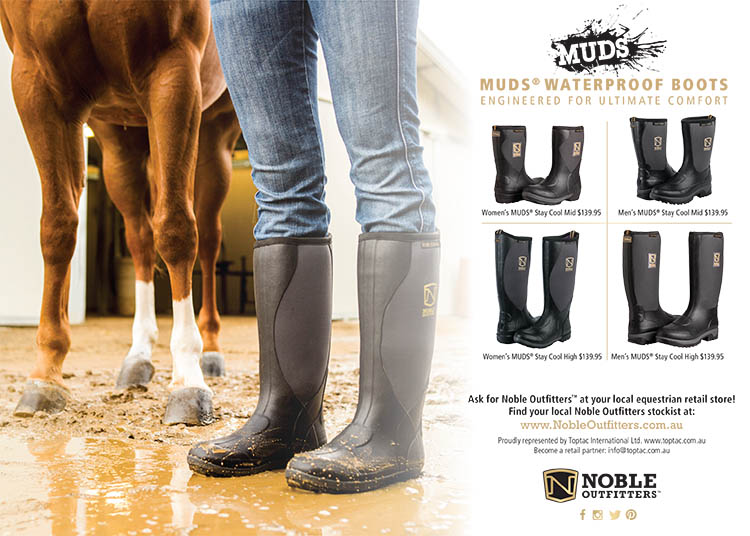

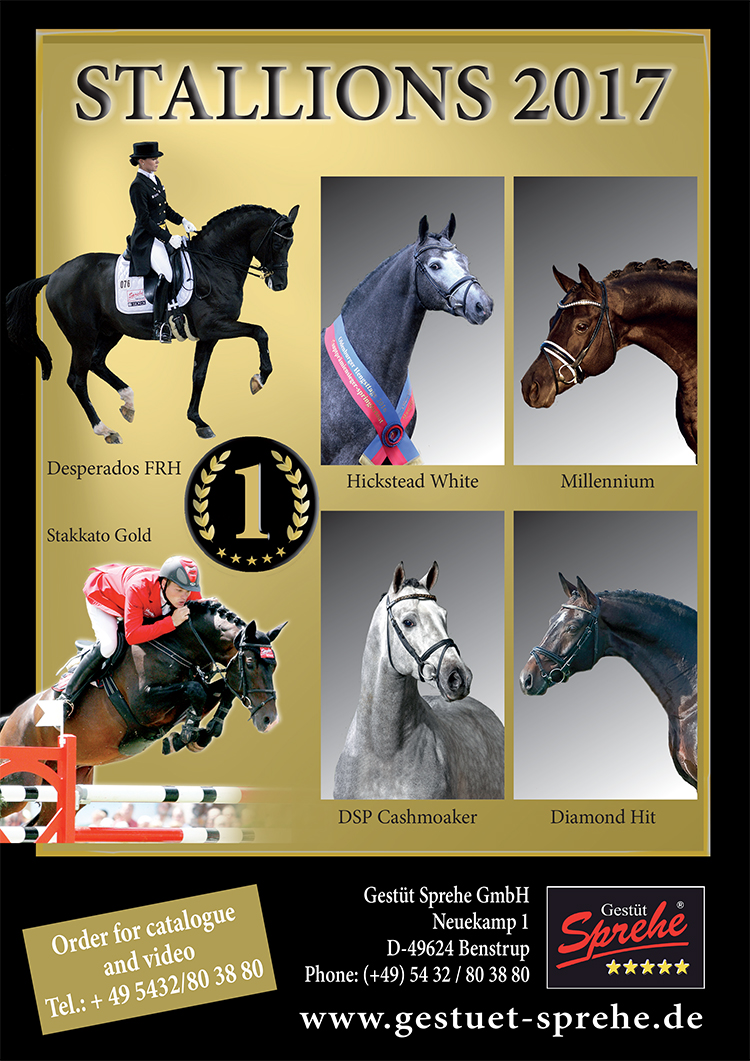
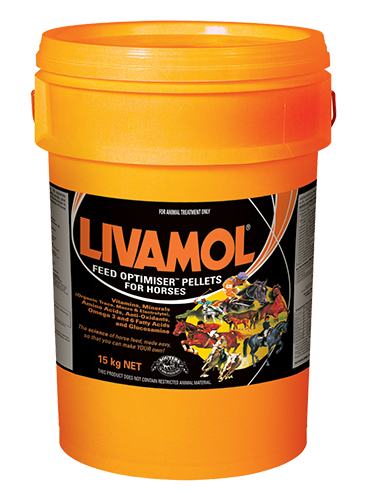

Great article . Loved reading . Can i call in sometime to see your stables . Is it purely dressage or do you have jumping .
lovely to read